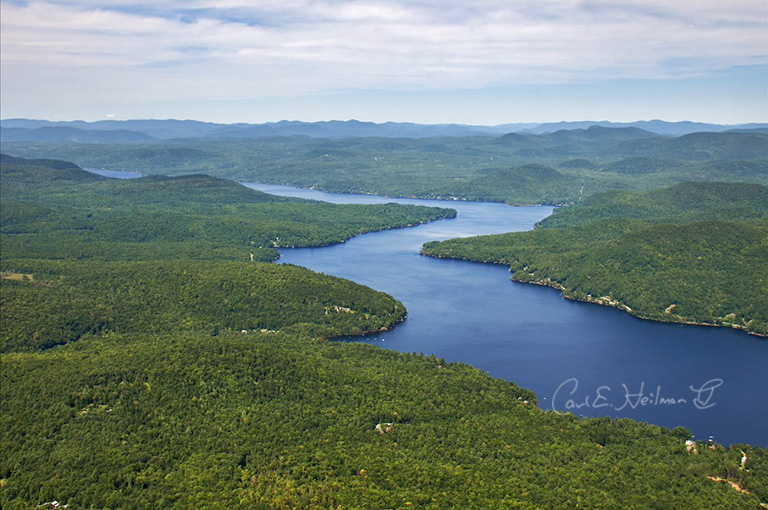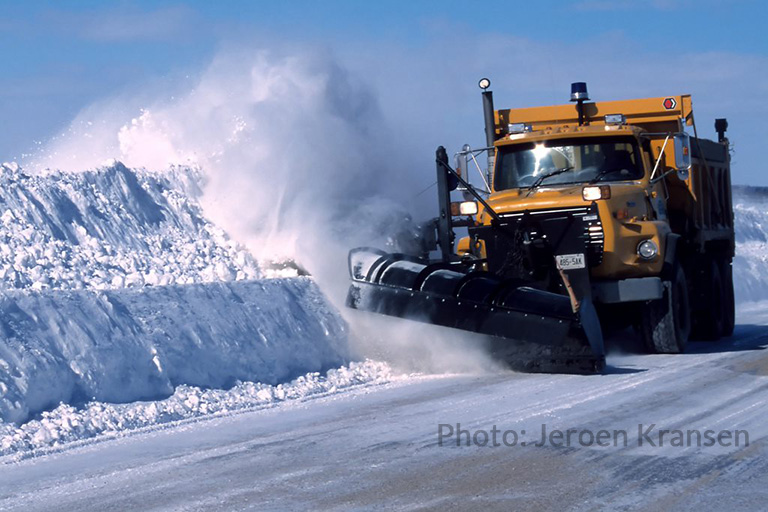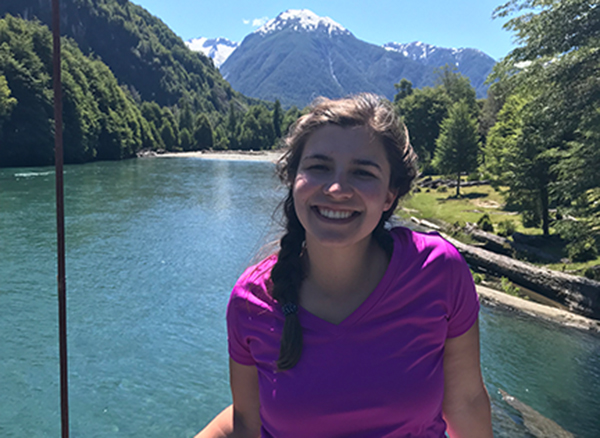
What’s the Deal with Road Salt? | Watershed Protection in the Adirondacks
Wednesday, August 29, 2018
By: Revée Needham - Colgate University Upstate Institute Summer Field School Fellow
Do you know which watershed you live in? We are all part of a watershed! A watershed simply means that water flows across the surface and drains into a river, lake or aquifer. Within the Adirondack Park, there are five watersheds: the St. Lawrence River, Lake Champlain River, Upper Hudson River, Black River, and Mohawk River Basin. Watersheds provide clean water to the Park’s 130,000 year-round residents and to the 12-million annual visitors. Pollutants within each watershed have the potential to contaminate far-away lakes and groundwater. Thus, water quality continues to be a critical issue. The fight against acid rain is still on, and we now face threats of road salt contamination, harmful algae blooms, aquatic invasive species, and more.
Adirondack Lakes Alliance Symposium
On August 8, four Council staff members and one board member attended the annual Adirondack Lakes Alliance Symposium. This annual conference brings together lake associations from across the Adirondacks, as well as scientists, state agencies, nonprofits, and concerned citizens to collaborate on water stewardship issues. The meeting began with introductions from Assemblyman Jones and Senator Little, who have been longtime supporters of water quality. Then, Venetia Lannon, NY Deputy Secretary of the Environment, discussed efforts by Governor Cuomo’s office to address water quality issues, with a focus on harmful algal blooms. The main discussion of the morning centered around the region-wide road salt groundwater contamination, differences between road salt use on state and local roads, and the ecological and health impact of road salt. Finally, there was a short update on aquatic invasive species. The conference highlighted the need to share information to address region-wide issues and provide a unified front on the importance of clean water.

What’s the deal with road salt?
Recent studies by Dan Kelting (Professor at Paul Smith’s College) have reported that in the Adirondacks, state roads receive 2.5 times as much salt as local roads, largely due to the higher traffic and speeds on state roads. After the salt runs off the road, it ends up in surface waters, soils and groundwater. From there it can end up in private wells, where we get our drinking water or in the lakes and rivers in which we swim. Testing shows there is widespread salt contamination in wells across the Adirondacks. Road salt can decrease property values, pose a hazard to human health for those on low-sodium diets, and increase homeowner expenses due to excessive corrosion of pipes. The Ausable River Association published studies of Mirror Lake that show that salt in the lake decreases the available habitat for lake trout. In developed areas like Lake Placid, salt runoff comes from sidewalks and parking lots in addition to roads. Progress includes pilot projects to reduce salt, new plow technology, and a strategic working group with the Departments of Transportation, Environmental Conservation, and Health; however, everyone can do their part to protect our water quality.

What you can do to protect your watershed?
- Participate in water quality testing by contacting your lake’s steward keeper or enrolling your lake in the Citizens Statewide Lake Assessment Program. Get involved in other citizen science efforts that address water issues.
- Learn about Harmful Algae Blooms so that you can avoid them and report them!
- Clean, Drain, and Dry your boat after a day on the lake! Do your part to stop the spread of aquatic invasive species.
- Reduce your use of salt at your home or business. Shovel early to prevent the ice from bonding with the pavement.
- If you have a private well, make sure to test it every 3-5 years or sooner if you notice changes in your water.
- Likewise, verify that your septic tank is inspected regularly and cleaned every 5-10 years.
- Bring your car to the car wash instead of cleaning it in your driveway, where the chemicals and dirty water can seep into ground or surface water.
- Check fuel storage tanks regularly to ensure there are no leaks.
- Dispose of old medications properly in a hazardous waste facility, not down the drain.
- Avoid antibacterial soaps and cleaning products, which can lead to antibiotic-resistant “superbugs” and disrupt the hormones of aquatic life.
The above suggestions are just a few tips on how you can be a good water steward. Stay informed on water quality issues so that you can advocate for your community. We are all dependent on water for life, and we all need to do our part to protect this precious resource. Share your favorite waterbody or a tip for protecting water in the Adirondacks using #WildAboutThePark.

Revée graduated from Colgate University with Bachelor degrees in Environmental Studies and Geography. At Colgate, she worked in the Office of Sustainability, where she promoted behavior changes among her peers and developed her passions for environmental stewardship and social justice. Revée’s project this summer is focused on tackling issues of overuse and promoting stewardship in the Adirondacks.
Colgate University Upstate Institute Summer Field School Program partners Colgate students with organizations to benefit of communities. Students gain a understanding of issues facing Upstate New York and a deeper sense of place. Traditionally, students were located near Hamilton, NY but this summer, a cohort of students are living and learning in the Adirondacks region.




